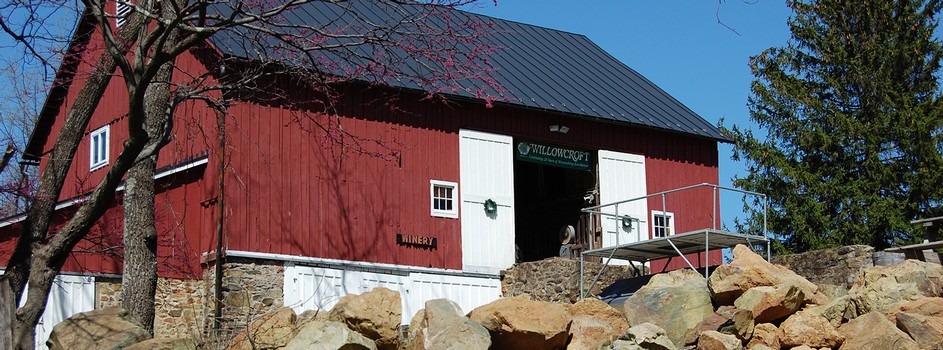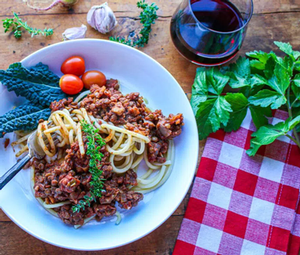News
Welcome to the Willowcroft blog! This is where we will be highlighting events and news from around the winery.
Perfectly Imperfect: How to Embrace Faults and Find Your Favorite Wine
 In the world of wine, perfection is elusive, which is precisely what makes it so captivating.
In the world of wine, perfection is elusive, which is precisely what makes it so captivating.
Much like people, every bottle of wine carries its own story, quirks, and character. Sometimes that story is rich and complex; other times, it’s a little offbeat. You may have heard terms like corked, oxidized, or reductive thrown around in tasting rooms or wine forums—but what do these so-called “faults” really mean, and should they scare you off?
Let’s uncork the truth.
A wine fault is typically defined as a chemical or microbial issue that deviates from what’s considered a “sound” wine. These can result from problems during winemaking, bottling, storage, or even cork taint. But here’s the catch: not all deviations are dealbreakers. In fact, some are simply nuances, and whether or not they bother you depends entirely on your palate.
Just like some people love blue cheese while others can’t stand it, wine “flaws” are often subjective. That little funky note or oxidative edge? It might just be what sets a wine apart in a way that makes you fall in love.
- Cork Taint (TCA): This one is pretty universally disliked—described as musty, moldy, or like wet cardboard. It mutes fruit flavors and makes the wine seem flat. If you encounter it, don’t feel bad about sending the bottle back or asking for a replacement.
- Oxidation: When a wine has been overly exposed to oxygen, it can taste like bruised apples or lose its vibrancy. But in some styles—think Sherry or older whites—oxidative notes are a feature, not a bug.
- Volatile Acidity (VA): A whiff of vinegar or nail polish remover can indicate high VA. While excessive VA can be jarring, a touch can actually enhance a wine’s complexity and brightness, especially in reds.
- Brettanomyces (“Brett”): This wild yeast brings earthy, leathery, or barnyard aromas. To some, it's rustic charm; to others, a flaw. Like spice in a dish, a little might be delicious—but too much can overpower.
- Reduction: The opposite of oxidation, reduction can smell like struck matches or rubber. Swirl your glass—often, those notes will dissipate, revealing layered, savory elements underneath.
Mouse is one of the more polarizing and, frankly, bizarre faults in wine. It's not something you smell—it’s something you feel after the sip, when the finish leaves your mouth tasting oddly like a hamster cage. Yes, really.
People describe it in creative (and colorful) ways: urine-soaked sawdust, old cured meats, or even “my teenage dog’s breath.” It’s most common in natural wines made without added sulfites and tends to emerge after the bottle has been open for a while, so a wine that seems fine at first might develop that off-putting flavor 30 minutes in.
Mouse is tricky because it’s not always present, and it’s not always immediately apparent. If you notice it, it’s usually best to move on to another wine, it's one of those faults that doesn’t fade away with food or time. Still, it’s a good reminder that even the most lovingly made wines can have quirks.
At Willowcroft, wine shouldn’t be intimidating—it should be an experience. Not every bottle will be perfect, but it might be perfect for you. And that’s what makes wine tasting so fun: every vintage, every varietal, every sip is an invitation to discover something new.
Whether you’re sipping a crisp Seyval on the porch or diving into a bold Bordeaux blend by the fire, remember: wine is meant to be enjoyed, not analyzed to death.
Next time something tastes a little different, don’t rush to judgment. Give it a swirl, give it a chance—and if it’s not for you, that’s okay too. There’s a world of wine waiting, full of character, depth, and maybe even a few charming flaws.
Like people, wine is rarely perfect, but it might be the perfect match for you.
How Is Champagne Made? A Guide to Sparkling Wine Production Methods

Sparkling wine is known for its festive bubbles, but not all fizz is created the same way. Champagne—arguably the world’s most iconic sparkling wine—is crafted using a time-intensive technique called the Traditional Method, or Méthode Champenoise. This process gives Champagne its signature fine bubbles, rich mouthfeel, and toasty, yeasty complexity.
But it’s not the only method. Let’s explore how sparkling wines are made, starting with the classic and moving through alternative worldwide techniques.
This is the most meticulous and respected method of making sparkling wine, used for Champagne, Crémant, Cava, and other premium wines.
- Step 1: Base Wine Production
Winemakers begin by creating a still (non-sparkling) wine from grapes, usually dry and high in acidity. These base wines are often blended from different vineyards, grape varieties, or vintages. - Step 2: Second Fermentation in Bottle
A mixture of sugar and yeast, called the liqueur de tirage, is added to the base wine, which is then sealed in individual bottles. This triggers a second fermentation, which produces carbon dioxide—the source of the bubbles. - Step 3: Lees Aging (Yeast Autolysis)
As the yeast cells finish fermenting the sugar, they die and settle inside the bottle, creating a layer of sediment known as lees. Wines are often aged on these lees for months or even years to develop richer textures and flavors like brioche, toast, and hazelnut. - Step 4: Riddling (Remuage)
Bottles are slowly tilted and rotated, traditionally by hand, to move the sediment down into the neck of the bottle. - Step 5: Disgorgement
The neck of the bottle is frozen, and the plug of frozen lees is ejected. The wine is topped up with a mixture of wine and sometimes sugar (called the dosage) to balance flavor before final sealing. - Step 6: Final Bottling and Labeling
The finished wine is corked, wired, labeled, and ready for enjoyment!
Not all sparkling wines are made using the traditional method. Here are a few other approaches:
- Charmat Method (Tank Method)
This method, used for Prosecco and many fresh, fruit-driven sparkling wines, carries out the second fermentation in a large, pressurized stainless steel tank rather than in individual bottles. It’s faster and less expensive, but it creates larger, less persistent bubbles and minimal yeast character. - Transfer Method
A hybrid of the traditional method, this approach starts with bottle fermentation, but the wine is then transferred to a tank, filtered, and rebottled. It’s more efficient and avoids riddling while retaining some lees influence. - Ancestral Method (Pét-Nat)
Short for Pétillant Naturel, this ancient method allows the wine to finish its fermentation in the bottle without added yeast or sugar. The result is a lightly sparkling, often cloudy wine that can be funky, unpredictable, charming, and fresh. - Continuous Method
This method, used less commonly today, involves continuous fermentation across several connected tanks, creating a steady stream of sparkling wine.
The method used to produce a sparkling wine significantly impacts the final experience in your glass. While the Traditional Method creates wines with finer bubbles and more complex flavors, other methods can produce fun, fresh wines perfect for casual sipping.
Whether you're popping Champagne for a celebration or toasting with a bright glass of Prosecco on the patio, knowing how your bubbles are made can deepen your appreciation—and guide you to styles you’ll love.
Bold Reds Meet Plant-Based Plates: Vegetarian & Vegan Pairings with Willowcroft Wines
When people think of bold red wines, they often imagine them alongside rich meats—steaks, burgers, lamb. But what if you’re living a vegetarian or vegan lifestyle? Great news: you don’t need meat to enjoy a bold red. At Willowcroft Farm Vineyards, we’ve found that our robust reds pair beautifully with creative plant-based dishes. With a bit of flavor strategy, these wines can shine alongside your favorite meatless meals.
Let’s start with a few of Willowcroft’s boldest red wines:
- Petit Verdot – Deep, dark, and structured, with notes of blackberry, violet, and spice.
- Cabernet Sauvignon – A full-bodied red with black fruit character, tannin, and hints of toasted oak.
- Cabernet Franc – Medium to full-bodied, with savory herbaceous notes, cherry, and soft pepper spice.
- Chambourcin – Lush and fruit-forward, with earthy undertones and a smooth, juicy finish.
- Merlot – Soft yet rich, offering plum, cherry, and a touch of chocolate.
- Mushroom Wellington with Cabernet Franc
The earthiness of mushrooms paired with flaky pastry makes this dish rich and savory. Cabernet Franc brings out the umami and adds a bit of lift with its natural acidity and herbal edge. For extra depth, include shallots and a red wine reduction in your filling. - Smoky Lentil & Walnut Bolognese with Petit Verdot
This hearty, smoky vegan sauce doesn’t need meat to be bold. Lentils, tomatoes, and walnuts simmered with garlic and smoked paprika create a satisfying texture and depth that match Petit Verdot’s dark fruit and spice. - Eggplant Parmesan (Dairy-Free) with Cabernet Sauvignon
Whether you go traditional or gluten-free, this veganized version of a classic Italian dish holds up to a structured Cab. The acidity of the tomato sauce balances the tannins, while the eggplant’s texture stands up to the wine’s boldness. - Vegan BBQ Jackfruit Sandwich with Chambourcin
Chambourcin’s ripe fruit and slight earthiness complement the tangy, smoky BBQ flavor of jackfruit. Add a crunchy slaw and serve on a toasted bun for a laid-back but delicious pairing. - Grilled Portobello & Veggie Skewers with Merlot
Grilling brings out the sweetness in vegetables like bell peppers, onions, and zucchini, while portobellos add chew and umami. Merlot’s round body and smooth tannins harmonize well, making for a balanced and flavorful meal.
Pairing bold reds with vegetarian and vegan dishes is all about focusing on depth of flavor, texture, and umami elements. Roasted, grilled, or smoked ingredients tend to perform best. With Willowcroft’s versatile selection of red wines, you’re never limited by your diet—only by your imagination.
Come visit us to taste these wines and discover even more plant-based pairings. Whether you’re a full-time vegan or just trying something new, a bold Willowcroft red is waiting for you.
🍷 Cheers to flavor without compromise!
The Truth About Corked Wine - Part III
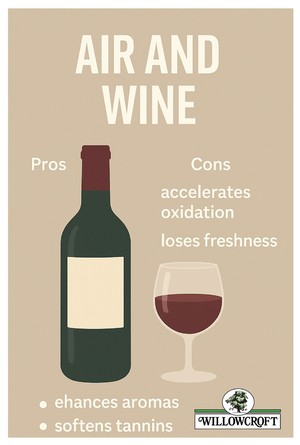
Part 3: The Role of Air in Wine – Friend or Foe?
We’ve covered spotting a corked wine and what to do when it happens. Now, let’s explore the closely related topic of oxygen and wine. It can be both beneficial and harmful – depending on timing.
When Air Is a Good Thing
Pouring wine into a glass or decanter allows it to "breathe." This process lets aromas develop, and tannins soften. For younger, tightly structured wines, a little air exposure helps reveal more complexity and makes the wine more enjoyable.
When Air Is a Problem
Leave that same wine open for too long, and oxidation takes over. You’ll notice:
- Faded fruit flavors
- Flat, dull aromas
- A vinegar-like or sherry smell over time
This process can take hours or days, depending on the wine. After opening, proper storage (re-corking, vacuum pumps, refrigeration) is key.
Important Distinction: Cork Taint vs. Oxidation
If a wine smells like vinegar or cooked fruit, it’s likely oxidized – not corked. Corked wine smells musty and moldy, while oxidized wine smells flat or sour.
Final Tip: Decanting won’t fix a corked wine. If a musty smell lingers and fruit flavors are absent, it’s best to let that bottle go.
Stay tuned to Willowcroft for more wine education, pairing tips, and vineyard news. And if you ever get a corked wine here, let us know. We want every bottle you open to bring joy – not disappointment!
The Truth About Corked Wine - Part II
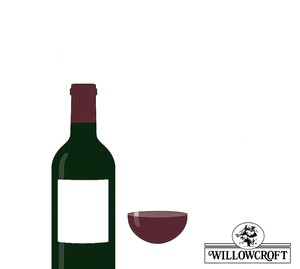
Part 2: Can Corked Wine Be Saved? And What Wines Are Most at Risk?
Once you’ve identified a corked wine, the next logical question is: Can it be fixed? Sadly, the answer is almost always no. TCA binds to the wine and can’t be removed through airing out, decanting, or filtering.
The "Saran Wrap Trick" – Myth or Magic?
There used to be a method involving plastic wrap to bind TCA and remove the musty smell. It worked with an older version of Saran Wrap, but today’s plastics don’t have the same chemistry, so the trick doesn’t really work anymore.
What to Do If You Get a Corked Bottle
If you’re at a tasting room or restaurant, let the staff know. Most places are happy to replace the bottle. If you purchased the wine retail, save the cork and receipt and contact the seller. Corked bottles aren’t your fault and are usually refunded or replaced.
Which Wines Are Most Susceptible?
Cork taint doesn’t discriminate by price or variety, but here are some factors:
- Natural cork closures are the primary risk factor. Screw caps and synthetic corks are much less likely to be affected.
- Delicate wines like light-bodied reds and whites may reveal cork taint more easily than bold, heavily oaked reds.
- Older wines can show cork taint more obviously as their fruit character fades, although age itself doesn’t cause cork taint.
Next Week's Topic: Part III - The role air plays in wine enjoyment and spoilage, from decanting benefits to when oxygen becomes the enemy.
The Truth About Corked Wine - Part I
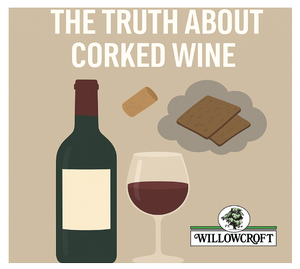
Part 1: What Does It Mean When a Wine Is Corked?
Have you ever opened a bottle of wine, poured a glass, and thought something smelled off – like a damp basement or wet cardboard? If so, you likely encountered a “corked” wine. Don’t worry, you’re not alone. Corked wine is a common wine fault that even seasoned wine lovers run into occasionally.
Let’s start with the basics: a corked wine doesn’t have cork bits or a dry cork floating in it. Instead, it refers to a wine tainted by TCA (2,4,6-trichloroanisole), a compound that can form when natural fungi in cork come into contact with certain chlorine-based substances. TCA causes a musty, moldy smell that overwhelms the wine’s natural aromas.
How Common Is Corked Wine?
Today, cork taint affects an estimated 3–5% of wines sealed with natural cork. That means about 1 in 20 bottles might be corked. Thanks to modern cork processing improvements, rates have dropped from historical highs of 5–10%, but it still happens.
How to Recognize It
- Tell-tale signs of a corked wine include:
- A musty, moldy smell (wet dog, cardboard, damp basement)
- Muted or missing fruit aromas
- Flat or dull taste that doesn’t improve with air
Some people are more sensitive to TCA than others, so if a wine tastes or smells lifeless and unpleasant to you, trust your instincts.
Coming Next Week: Part II - We’ll dive into whether corked wine can be saved, how to handle it when it happens, and why some wines are more at risk than others.
Beyond the Fruit: Exploring the Vegetal Notes in Your Favorite Wines
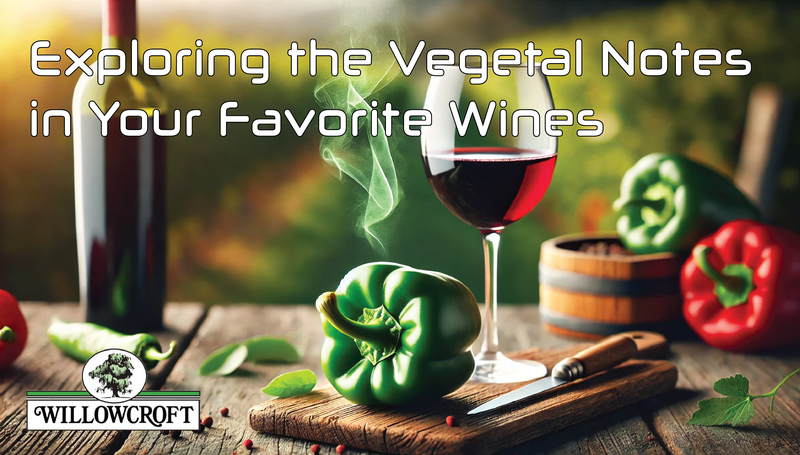 Have you ever sipped a glass of wine and detected a distinct green pepper aroma or flavor? This surprising characteristic is primarily attributed to methoxypyrazines—naturally occurring compounds in certain grape varieties. Understanding their role in wine can deepen your appreciation of different styles and help you recognize how viticulture and winemaking choices influence flavor.
Have you ever sipped a glass of wine and detected a distinct green pepper aroma or flavor? This surprising characteristic is primarily attributed to methoxypyrazines—naturally occurring compounds in certain grape varieties. Understanding their role in wine can deepen your appreciation of different styles and help you recognize how viticulture and winemaking choices influence flavor.
Methoxypyrazines are highly aromatic compounds found in grape skins and stems. They contribute to "green" flavors in wine, often reminiscent of green bell peppers, grass, or even cherry stems. Even small concentrations can significantly impact a wine’s aroma and taste.
While present in many grape varieties, methoxypyrazines are most noticeable in certain Bordeaux varieties, particularly:
- Cabernet Sauvignon – Often exhibits green pepper notes when grown in cooler climates or harvested before full ripeness.
- Cabernet Franc – Known for its distinct vegetal characteristics, contributing to its unique flavor profile.
- Merlot – Typically fruit-forward, but it can display subtle green pepper nuances under certain conditions.
Historically, vegetal notes were characteristic of red Bordeaux wines. However, with the rise of New World wine regions like California, which produced Bordeaux varieties with little to no green flavors, consumer preferences began shifting toward riper fruit profiles. Even Bordeaux winemakers adapted their practices to reduce pyrazine levels and meet modern taste expectations.\
Grape growers have substantial control over methoxypyrazine levels through vineyard management techniques:
- Canopy Management – Removing leaves and lateral shoots early in the growing season enhances sunlight exposure, reducing pyrazine accumulation.
- Vine Vigor & Water Management – High vine vigor and excessive irrigation lead to dense canopies, increasing pyrazine levels. Controlling water supply ensures optimal ripening.
- Harvest Timing – Allowing grapes to ripen fully naturally decreases methoxypyrazine concentrations, leading to more fruit-forward flavors.
At Willowcroft Farm Vineyards, we take great care in our vineyard practices to ensure our grapes reach full ripeness, preventing overwhelming green pepper flavors. Our approach includes:
- Dry Farming – Relying solely on natural rainfall encourages deep root growth and balanced vine vigor, leading to optimal fruit ripeness.
- Site Selection – Our vineyards sit atop the Catoctin Ridge at elevations of 600 to 750 feet, where warm summer days and cool nights create ideal ripening conditions.
- Canopy Management – Timely leaf removal in the fruit zone enhances sunlight penetration and airflow, reducing disease risk and promoting even ripening.
We employ these strategies to produce wines with beautifully ripened fruit flavors, balanced acidity, and complexity—without dominant green pepper notes.
Not all drinkers perceive green pepper notes the same way—some enjoy the added complexity, while others find it distracting. Interestingly, methoxypyrazine-derived aromas evolve as wines age into subtler characteristics like menthol or tobacco, adding depth to the wine.
The presence of green pepper in wine is a fascinating example of how grape variety, vineyard management, and winemaking techniques shape a wine’s final profile. Understanding where these flavors come from and how they can be influenced allows for a deeper appreciation of wine’s complexity. At Willowcroft, we take pride in crafting wines highlighting rich, ripe fruit flavors while maintaining balance and elegance in every bottle.
Sip, Savor, Say 'I Do': A Guide to Choosing the Perfect Wedding Wines
 As spring nears and love blooms, wedding season comes into full swing. Whether planning an intimate gathering or a grand celebration, selecting the right wines can enhance the joy of your special day. Here are a few tips to help you choose the perfect wines for your wedding reception.
As spring nears and love blooms, wedding season comes into full swing. Whether planning an intimate gathering or a grand celebration, selecting the right wines can enhance the joy of your special day. Here are a few tips to help you choose the perfect wines for your wedding reception.
Start with What You Love
A wedding celebrates love, and your wine choices should reflect your tastes as a couple. Begin by scheduling a wine tasting (or two) at your favorite local wineries. Sample a variety of options and get a consensus between you and your partner before making a final decision. Selecting wines you both enjoy will make the experience more personal and memorable.
Consider the Time of Year
Seasonality plays a big role in choosing the right wines. For spring and summer weddings, lighter, more refreshing wines are ideal to complement the Virginia heat. A crisp Seyval Blanc or Chardonnay makes an excellent springtime white, while Vidal Blanc and Riesling offer excellent choices for summer. Regarding reds, lighter-bodied options like Chambourcin, Pinot Noir, or a refreshing Rosé are great for warmer months. For fall and winter weddings, bolder wines like Cabernet Sauvignon and Petit Verdot may be more suitable.
Think About the Time of Day
The timing of your wedding can also influence your wine selection. Afternoon weddings typically call for lighter wines like Seyval Blanc or Pinot Noir to keep the mood bright and refreshing. When temperatures cool, evening receptions allow for fuller-bodied options, making a bold red like a rich Cabernet Sauvignon a great choice to pair with a hearty dinner.
Pair Wines with Your Menu
Food and wine pairings can elevate the dining experience at your wedding. While your caterer may have recommendations, here are some general guidelines to consider:
- Seyval Blanc: Pairs beautifully with oysters, seafood, and spicy dishes.
- Chardonnay: A versatile white that complements salmon, poultry, and scallops.
- Chambourcin: A great match for poultry, lamb, and pork.
- Cabernet Sauvignon: A bold red that pairs exceptionally well with steak and other red meats.
By taking into account your personal preferences, the season, and your menu, you can create a delightful wine experience for you and your guests. Cheers to love, laughter, and happily ever after!
Merlot Vs. Petit Verdot. How to choose...
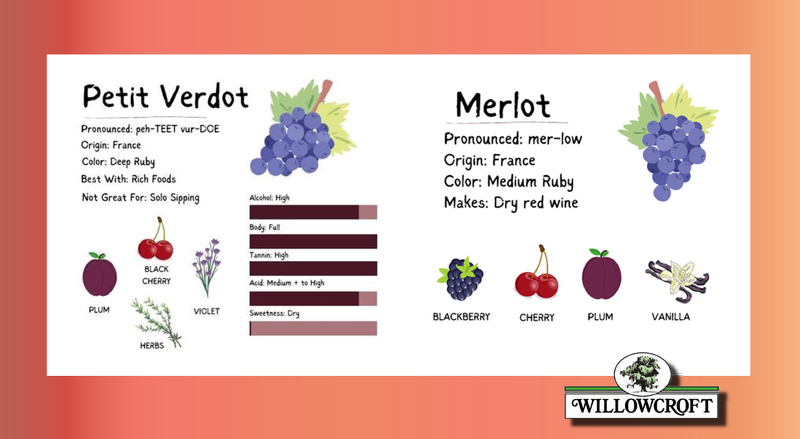 Merlot and Petit Verdot are two prominent red grape varieties that have found a welcoming home in Virginia's vineyards, each offering distinct characteristics that appeal to wine enthusiasts.
Merlot and Petit Verdot are two prominent red grape varieties that have found a welcoming home in Virginia's vineyards, each offering distinct characteristics that appeal to wine enthusiasts.
Merlot originated in Bordeaux, France, and is celebrated for its approachability and versatility. Typically, Merlot is a dry, medium- to full-bodied wine with moderate acidity, moderate to high alcohol content, and soft but present tannins. Flavor profiles often include notes of black cherry and chocolate.
Petit Verdot, also hailing from Bordeaux, is traditionally used as a blending grape but has gained recognition as a varietal wine, especially in regions like Virginia. Known for its late ripening, Petit Verdot produces deeply colored, full-bodied wines with high tannin levels. Flavor profiles often include rich blue and black fruit flavors, dominated by blackberry, blueberry, black currant, and black cherry. The wines can also be quite spicy, displaying aromatic floral and herbal character—showcased by violet, lavender, and dried herbs—and sometimes meaty, gamey notes.
In Virginia, both Merlot and Petit Verdot have adapted well to the state's diverse terroir. Merlot thrives in Virginia's clay-rich soils, making it the second most planted grape in the state. Petit Verdot has become one of Virginia's signature grapes, valued for its high acidity, which it retains despite the state's hot summers, and its resilience to varying weather conditions.
At Willowcroft Farm Vineyards, nestled atop the Catoctin Ridge in Leesburg, Virginia, both Merlot and Petit Verdot grapes are cultivated to produce distinctive wines that reflect the unique terroir of the region. Their Merlot offers a harmonious balance of fruit and tannins, while their Petit Verdot showcases the grape's characteristic depth and complexity.
Choosing Between Merlot and Petit Verdot
When deciding between Merlot and Petit Verdot, consider your personal taste preferences and the occasion. Merlot's softer tannins and approachable fruit flavors make it a versatile choice suitable for various settings, from casual gatherings to formal dinners. It's an excellent option for those who appreciate a smooth, fruit-forward wine that pairs well with a wide range of dishes, including roasted meats, pasta, and mild cheeses.
On the other hand, Petit Verdot offers a more robust and intense experience. Its full body, higher tannin content, and complex flavor profile make it ideal for those who enjoy bold wines. Petit Verdot pairs exceptionally well with rich, hearty dishes such as grilled steaks, lamb, and strong cheeses, enhancing the dining experience with its depth and structure.
Ultimately, the choice between Merlot and Petit Verdot depends on your palate and the culinary context. Exploring both varietals, especially those produced by local wineries like Willowcroft Farm Vineyards, can provide a deeper appreciation for the diversity and quality of Virginia wines.
Why Your Wine Glass Isn’t Full—And Why That’s a Good Thing!
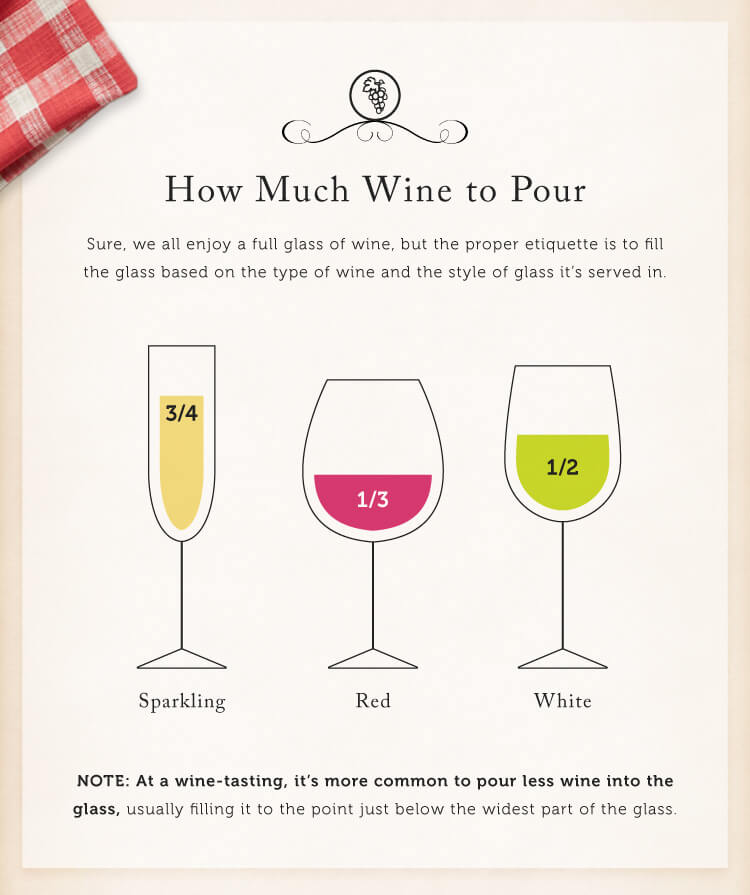
How Full Should You Fill Your Wine Glass?
Have you ever ordered a glass of wine and felt a pang of disappointment when it arrived looking half-empty? It’s a common reaction, but before you feel shortchanged, let’s talk about why wine glasses aren’t filled to the brim.
The Ideal Pour
The amount of wine poured into a glass isn’t just about aesthetics; it plays a crucial role in the wine’s taste and aroma. Generally, the ideal pour is about one-third to one-half full, depending on the type of wine and the glass itself. This may seem like a small amount, but there’s a good reason for it.
Why Not Fill It to the Top?
Wine needs room to breathe. When a glass is only partially filled, there’s ample space to swirl the wine, which helps release its aromas. This is especially important for red wines, known for their complex flavors and rich aromas, which benefit from aeration to open up their full bouquet of flavors. If a glass is filled to the brim, there’s no space for swirling, and the wine’s aromas remain trapped, limiting the tasting experience.
Different Wines, Different Pours
Not all wines are poured the same way. Here’s a general guideline:
- Red wine: Typically poured to about one-third full to allow proper aeration and development of flavors.
- White wine: Often poured slightly more, around one-half full, since it doesn’t require as much aeration. A standard serving is 5 ounces (150 milliliters), as recommended by the FDA, USDA, and CDC.
- Sparkling wine: Poured closer to three-quarters full to help preserve the bubbles and prevent excessive foaming.
- Dessert wine: Served in smaller glasses with smaller pours due to their higher sugar and alcohol content.
The Right Glass Matters
The structure of a wine glass plays a significant role in enhancing the wine’s characteristics. Oxygenation softens tannins in reds and enhances the delicate characteristics of whites, allowing for a smoother and more enjoyable drinking experience.First things first: let’s talk about the glass itself. In general, red wine glasses are taller and feature a larger bowl. This is because red wines tend to be big and bold, requiring the extra space to fully experience their flavors and aromas. White wine glasses are typically smaller to preserve the aromas and keep the temperature cooler. The simplest method is to fill red wine glasses one-third full so you have room to give it a good swirl and aerate the wine, while white wine glasses should be filled half-full and sparkling wines about three-quarters full.
Don’t Feel Cheated—Savor the Experience
Instead of viewing a partially filled wine glass as a short pour, think of it as the perfect way to enjoy wine as intended. The space in the glass is just as important as the wine itself, allowing the aromas to develop, the flavors to shine, and the overall experience to be enhanced.
So, next time you receive a seemingly half-full glass, take a moment to swirl, sniff, and savor—because good wine is about more than just quantity; it’s about quality and experience!

